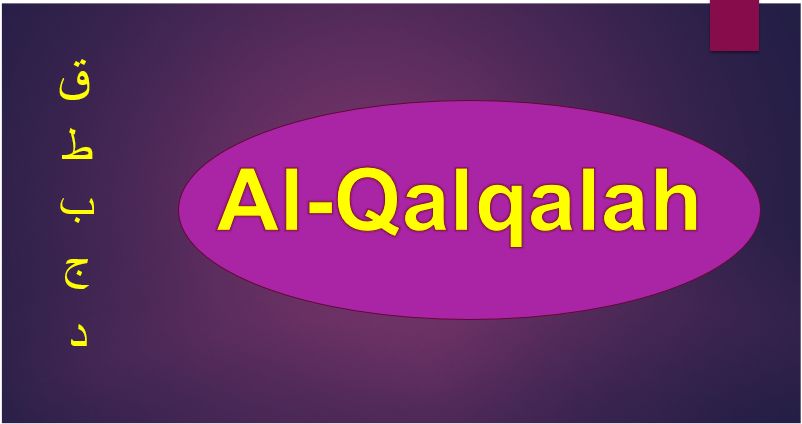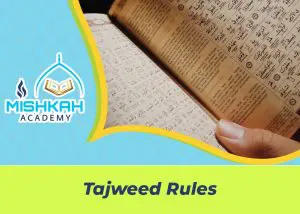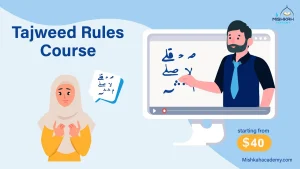Qalqalah Letters | Letters Of Qalqalah
Table of Contents
ToggleOne of the main benefits of learning the Qur’an with Tajweed is mentioned in the hadith of the Prophet “Those who can recite the Qur’an accurately and precisely will attain the highest ranks in Heaven” because the Holy Qur’an is the only book that its recitation is considered a form of worship with great reward. No other book or letter fits this description.
It is expected of every Muslim to read the Qur’an correctly as much as he can and in the correct way that was revealed to our Holy Prophet. Moving on to the article, we will study all the rules of Mim Sakina to the best of our ability.
Allah The Almighty said:
“And recite the Qur’an with a chant”, i.e., do not rush to read the Qur’an, but rather read it slowly and clearly while reflecting on the meanings.
Messenger of Allah (PBUH) said:
“The one who is proficient with the Qur’an will be with the noble and righteous scribes (the angels), and the one who reads it and stumbles over it, finding it difficult, will have two rewards.”
Ibn Al-Jazari also “Most Famous Tajweed Scholar” said:
“The practical application of Tajweed is without doubt compulsory. Who does not read the Quran correctly is a sinner”.
Before we shed light on Qalqalah Rules and dive into the practice comprehension of its rules, it is also recommended to read the Great Benefits Of Learning Tajweed Quran, as they are also very important an crucial.
We also need to explain why these conditions are known and applied while reciting the Holy Quran. As we know, reading the Qur’an well means reading it correctly according to the rules of Tajweed. Hence, it is important for us to learn the qalqalah letters meaning and its rules.
God Almighty revealed the Noble Qur’an to our Prophet Muhammad in this form (Tajweed) and commanded him to recite its verses, meditate on their meanings, understand their meanings, and beautify their recitation to be different and distinct from other textual readings.
Hence, putting How To Learn Tajweed Rules, including Huroof Qalqalah, a priority and giving it its dues effort and time is of great importance. Also, understanding our responsibilities so that we can receive his mercy is of our greatest duties.
Before we clarify the Rules Of Qalqalah, check this inspiring article to know How To Learn Tajweed Quran and apply its rules when reciting the Holy Quran.
Join thousands of Muslim Families who love learning Quran, Arabic and Islamic Studies from the comfort of their Homes.
Learn Quran, Arabic & Islamic Online
Best Online Tajweed Course
Learn Qalqalah Letters & Rules the Easy Way!
God Almighty revealed the Quran to the Prophet Muhammad (may God bless him and grant him peace) in the Arabic language. It was written by the Companions (may God be pleased with him) and compiled in book form. Then Many improvements were made to the text of the Qur’an, including Fathah, Kasra, Dumah, Tanween, Shaddah, etc, which are certain terms in the science of Tajweed.
In this post, we cover everything about it from the definition of Qalqalah to examples and how to apply it. To know more about the Qalqalah letters in detail, keep reading this post till the end! Inshallah, you will get a good understanding of qalqalah letters and rules.
What Is Qalqalah In Tajweed
Qalqalah linguistically: means shaking/disturbance. Its an echoing sound of pronouncing certain characters with the Sukoon Symbol on them or when one stops at these characters. They require the tones to be strong and create an echoing sound.
Qalqalah Letters In Arabic
Qalqalah means vibration in Arabic. Whilst Qalqalah in Tajweed means disturbing the 5 Qalqalah letters having Sukoon. This means a Saakin but with no corresponding movement with vowel letters with Fatha, Dummah, or Kasra. Qalqalah idiomatically: to disturb the Saakin letter, but without any corresponding movement of the mouth to become turbulent with a vibration and a distinct tone.
5 Qalqalah Letters
Qalqalah letters grouped in the phrase: قُطب جَد (Qutb Jad). That is, Haroof Qalqalah which are:
ق ط ب ج د
Dall Jeem Baa Taa Qaaf


It is only noticed on Horoof Qalqalah when they have Sukoon. In the case of a vowel, it is pronounced normally without a gurgle or an echo-like sound.
Rules of Qalqalah
Like anything else, there are some rules of Qalqalah that must be applied in Tajweed. There are two conditions for making the letter Qalqalah sound:
1- The first rule of Qalqalah is that the letter is one of the five letters of Qalqalah:
ق ط ب ج د
2- The Qalqalah letter, occurring either in the middle or at the end of the word, is Sakin. This indicates that it has a sukoon sign on it. If the Qalqalah letter has Fatha, Kasra, Dummah, or Tanween on it, it does not create an echoing or shaking sound and we normally pronounce them.
Types of Qalqalah
1- Qalqalah Kubra (Strong Echoing):
at the end of an Ayah.
2- Qalqalah Wusta (Medium Echoing):
at the end of a word in the middle of an ayah.
3- Qalqalah Sughra (Light Echoing):
in the middle of a word whether at the beginning, middle or end of an ayah.
Levels of Qalqalah
- Level 1: Strong
- Level 2: Intermediate
- Level 3: Weak
Examples Of Qalqalah
1- Strong Qalqalah (Kubra)
This type has severity and comes at the end of the verse. Qalqalah becomes strong when the word is at the end, it has a intensity, the last vowel drops, so you say it with Qalqalah.
You may notice that the last letters that require Qalqalah are not with Sukoon! However, pausing at the end of each verse is preferable, and so in such circumstances you should do a strong Qalqalah.
Qalqalah Kubra Examples:
We mention here examples of Qalqalah in the Qur’an for the strong type. Another example b in the next verse. Here, Qalqalah will hold for a while because it has intensity and stillness.
The last vowel is dropped and the stress is left because it is part of the word. So, if it is Wa Tabba, you make it Wa Tabb.
 Kasab Al-falaq
Kasab Al-falaq
![]() Muheett Masad Al-ma’aarij
Muheett Masad Al-ma’aarij
2- Medium Qalqalah (Wusta)
Qalqalah is intermediate or medium when the letter that appears at the end of the word does not have a Shadda. It does not matter if the letter contains an original Sukoon or not. These words are read in clear voice of Qalqalah.
Qalqalah Wusta Examples:
Examples of Qalqalah letters of the medium type in the Qur’an. The following Words contain medium or intermediate Qalqalah. Here the Sukoon is clearly marked on the letters of Qalqalah.

qad aflaha najid lahu
3- Weak Qalqalah (Sughra)
Qalqalah is weak if it is in the middle of the recitation. Qalqalah letters often appear in the middle of a word or have Sukoon at the top. But, when the reader decides to continue, a weak Qalqalah occurs as the reader quickly moves on to the next letter.
Qalqalah Sughra Examples
We mention below the letters of Qalqalah in the Qur’an of the weak type. Huruf Qalqalah Sughra can be seen in the following verses.
![]()
khalaqna tatt-heeran abnaa’akum
Similarly Sukoon is clearly marked on the Qalqalah letters.
Learn More Tajweed with Us
At Mishkah Academy, we aim to teach our Muslim brothers and sisters Tajweed the easy way. Hence, we have made it our mission to explain the basic rules in the Special Tajweed Series with clear examples. Check out these helpful blogs and master the Holy Quran recitation:
You May Like To Read
10 Benefits Of Memorizing Quran
10 Benefits Of Learning Quran Online
Recommended Courses
Final Words
In conclusion, Qalqalah is an Arabic term meaning echo or vibration. This post covers everything you need to know about the Rules and Qalqalah Tajweed. But if you want to know more about Qalqalah Rules in Arabic or qalqalah letters meaning in urdu, you can always enlist our help!
Mishkah Academy has qualified professionals who are fluent in the Arabic language and the method of reading the Quran. They are also fluent in English. Hence, you can easily learn qalqalah letters in english too. Not only can they teach you this in detail, but you can also get Qalqalah worksheets. So, if you or your children would like to know more about the letters of Qalqalah in detail, Join our Online Tajweed Course or Quran Recitation Course.



























